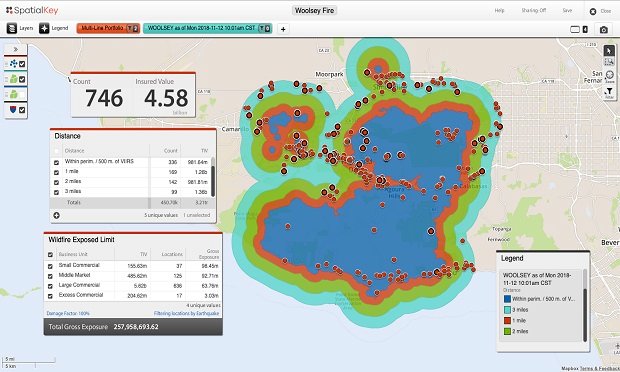(Eugene Lee is senior director, new initiatives and the headof Guidewire Live at Guidewire Software.)
|When is too much data a problem? Need a hint? Just ask today'sproperty & casualty insurers, who are drowning in seas ofstructured and unstructured information from both internal andexternal sources—a/k/a “big data.” It's the data deluge conundrum:big data can bring with it a treasure trove of information, but thevaluable nuggets are often buried beneath gigabytes of irrelevance.Trying to sift through it all can feel like an exercise infutility. What's needed isn't more data. What's needed is bettercontext.
|Data Deluge Challenges
|The current p&c insurance market is demanding andchallenging, requiring agility, efficiency, and precision inassessing risk and adjusting claims, in order to achieve profitablegrowth and improve customer service. Data plays an important rolein this environment but more data doesn't necessarily equate toimproved competitiveness. Instead of making it easier tocompete, indiscriminate data can compound the market's challengingnature: While insurers have lots of data, very little of it ispresented effectively to support more informed decisionsbecause:
- Data is siloed and fragmented across disparate systems anddepartments.
- Information is not timely.
- Granularity is not fine enough.
- Internal projects to obtain and analyze the right informationtake too long.
- Third-party data services are difficult and costly to evaluate,integrate and use.
- Solutions are not integrated or built for the task athand.
As a result, insurance professionals are forced to rely on onlythe data and tools they can readily access: data from internalsources, rules of thumb derived from past experiences, and apatchwork of external data from vendors, industry groups or evenconsumer websites.
|If the insurer has a modern core system, they are much morelikely to be capturing a higher quality and volume of data thanthose with older legacy systems. This data is much more easilyaccessed now as well—opening a door of possibility.
|Progress is being made. Insurers now have more data than everbefore, but that data is often scattered across multiple sites andsystems. Historically, insurers have had few goodoptions at their disposal to help tackle the data challenge.
|The problem is that most big data solutions focus solely onmanipulating and creating more data. At the end of the day,the best big data solutions are those that are transparent to theuser. They're the ones that quickly and effectively deliver theinformation being sought – they are the solutions that put datainto context.
|Let's look at big data in more of a consumer manner. When youcheck your smartphone app to gauge the traffic delays in store foryour evening commute you are in fact using a big datasolution. That traffic app is tapping into the driving timesof other smartphone users who have taken the route ahead of you. Itaggregates that information and based on their experiences momentsearlier, provides you with an indication of what's in store foryou—right now.
|You, the consumer, don't need or want to understand the toolsthe app provider is using to make this happen or the vast quantityof data that is crunched in split seconds to provide you withreal-time estimates. No, you're just thinking about how long it'sgoing to take to get home.
|The app is delivering information, but it is deliveringinformation in the context of your drive home and it isproviding the information right now, when you need it. Theapp is making the volumes of data it captures, relevant to you andactionable by you in a visual and easy to use way. It's solving aspecific problem. It's not more data, its bettercontext.
|This is exactly the same concept that when applied to insurancewill help insurers scale their data mountains and get their handson the right data to answer their questions and help them makebetter decisions. But how does the industry get from here tothere?
|Context-Driven Insurance
|What does better context look like? In an ideal solution,the right person would have instant access to all the relevantinformation they need based on who they are, what they're doing andwhen they need it. Context-driven insurance leverages athree-pronged approach: connect, curate for context, andappify.
|First, all data must be structured and electronically linked soinsurance professionals can connect to it across departments oreven across organizations. Modern core systems are a key firststep, but we need to look beyond. Use of a common core system datamodel by a group or community of peer insurers for instance,ensures that information is defined and treated consistently acrossorganizations so that data sharing is possible. The sharing ofstructured, non-confidential data with one another magnifies thepower of the data for everyone and provides the foundation forcontext.
|Connecting alone is where data mining tools fall short. There isan infinite amount of data out there, and without a “card catalog,”it's useless. The data therefore must be filtered, validated,prioritized and searchable—curated.
|What information will be relevant for a particular businesssituation? Where is the best source of that data? How is the dataincorporated into the systems I use every day to help me make thedecisions that drive my business? These are the questions that needto be asked. Your technology solution partner should have goodanswers for all of them.
|But even connecting and curating are not enough. As consumertechnology has shown, users expect much more from technology. ITcomplexity must be hidden, and re-emerge as an app that presentsthe technology's capabilities simply and intuitively.
|The app must deliver instantaneous results because we need theinformation right now. It must be intuitive and easilydigestible so the user can be in the app getting their informationquickly. It must be delivered in an anytime, anywhere,on-demand way so that it is ready when information is needed.
|In order to get and stay competitive in the p&c insuranceindustry, insurers must embrace unique technologies that addressone of their most critical challenges: taming the data deluge. Byapplying these context-driven principles, insurers can begin to usedata to their advantage, rather than succumb to it.
|Want to continue reading?
Become a Free PropertyCasualty360 Digital Reader
Your access to unlimited PropertyCasualty360 content isn’t changing.
Once you are an ALM digital member, you’ll receive:
- All PropertyCasualty360.com news coverage, best practices, and in-depth analysis.
- Educational webcasts, resources from industry leaders, and informative newsletters.
- Other award-winning websites including BenefitsPRO.com and ThinkAdvisor.com.
Already have an account? Sign In
© 2024 ALM Global, LLC, All Rights Reserved. Request academic re-use from www.copyright.com. All other uses, submit a request to [email protected]. For more information visit Asset & Logo Licensing.








